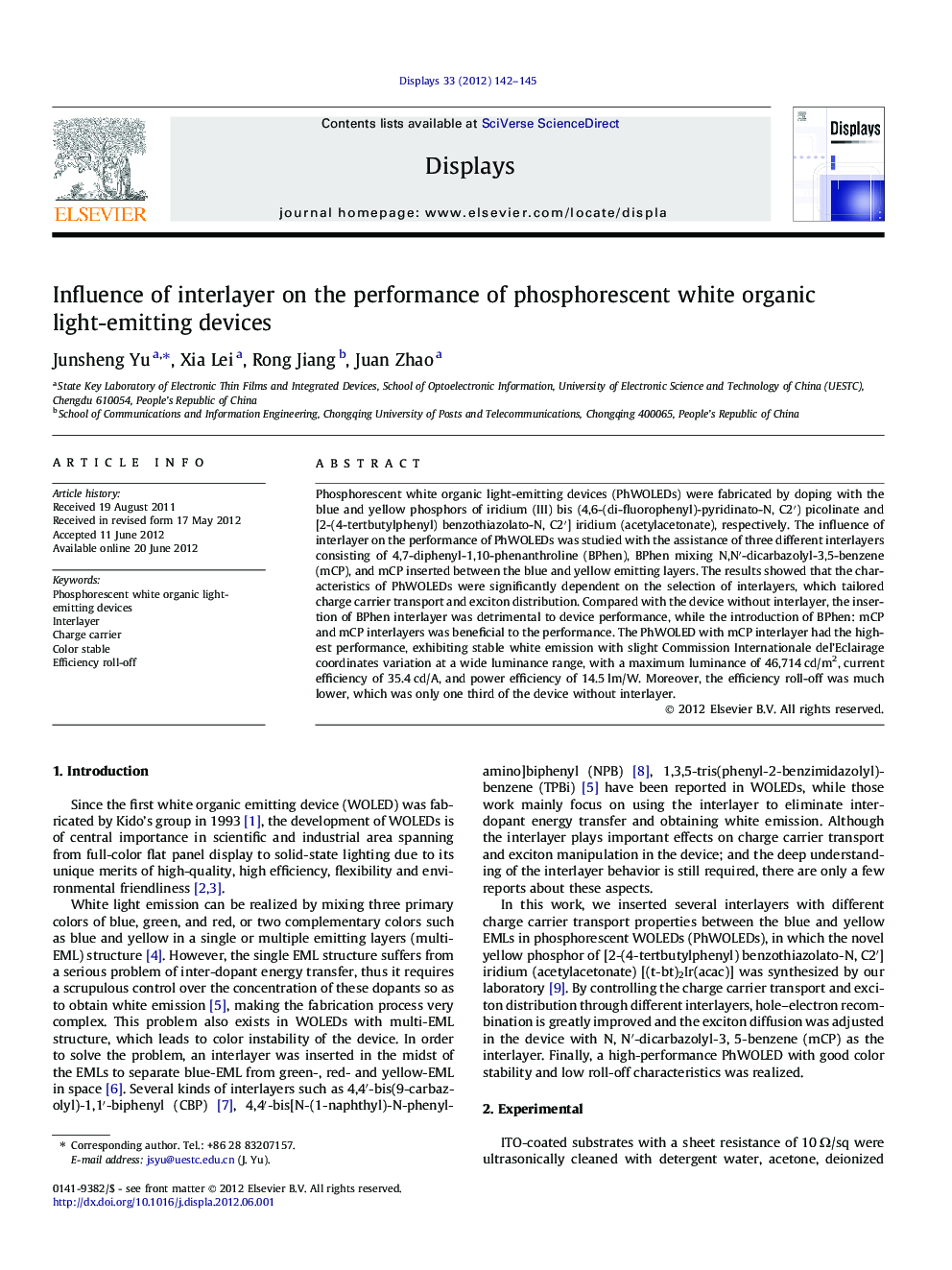| Article ID | Journal | Published Year | Pages | File Type |
|---|---|---|---|---|
| 538725 | Displays | 2012 | 4 Pages |
Phosphorescent white organic light-emitting devices (PhWOLEDs) were fabricated by doping with the blue and yellow phosphors of iridium (III) bis (4,6-(di-fluorophenyl)-pyridinato-N, C2′) picolinate and [2-(4-tertbutylphenyl) benzothiazolato-N, C2′] iridium (acetylacetonate), respectively. The influence of interlayer on the performance of PhWOLEDs was studied with the assistance of three different interlayers consisting of 4,7-diphenyl-1,10-phenanthroline (BPhen), BPhen mixing N,N′-dicarbazolyl-3,5-benzene (mCP), and mCP inserted between the blue and yellow emitting layers. The results showed that the characteristics of PhWOLEDs were significantly dependent on the selection of interlayers, which tailored charge carrier transport and exciton distribution. Compared with the device without interlayer, the insertion of BPhen interlayer was detrimental to device performance, while the introduction of BPhen: mCP and mCP interlayers was beneficial to the performance. The PhWOLED with mCP interlayer had the highest performance, exhibiting stable white emission with slight Commission Internationale del’Eclairage coordinates variation at a wide luminance range, with a maximum luminance of 46,714 cd/m2, current efficiency of 35.4 cd/A, and power efficiency of 14.5 lm/W. Moreover, the efficiency roll-off was much lower, which was only one third of the device without interlayer.
► Different interlayers used in phosphorescent white organic light-emitting devices. ► Interlayer adjusts the distribution of charge carriers and excitons. ► The insert of BPhen interlayer is detrimental to the performance. ► The introduction of BPhen:mCP and mCP interlayers is beneficial to the performance. ► Device with mCP interlayer performances best for balanced charge carriers.
